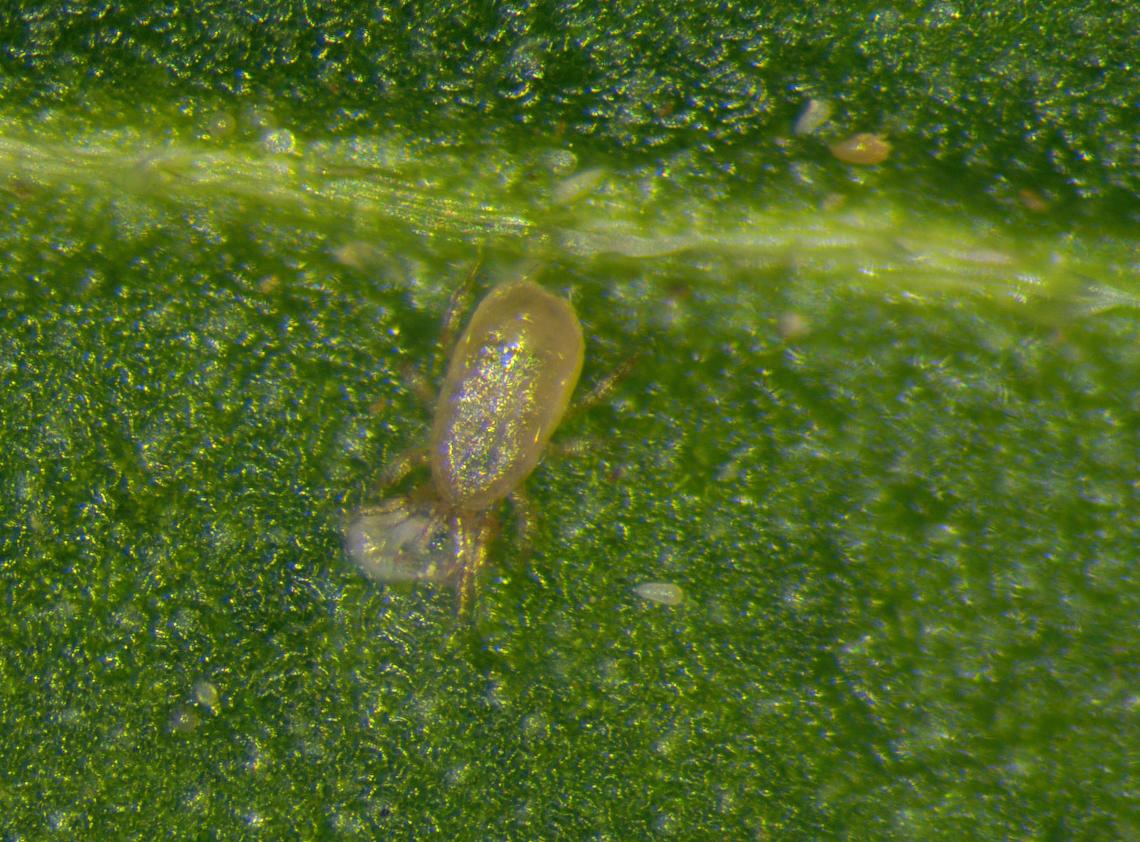Doreen Typhlodromus doreenae
Typhlodromus doreenae (Doreen) is a native predatory mite with a widespread distribution throughout the Mediterranean and temperate areas of southern and western Australia. Commonly found in deciduous perennial tree and vine crops, it is known to feed on Rust mite, Bud mite, Blister mite and Bunch mites in winegrapes, Bryobia mites and rust mites in almonds, stonefruit and pomefruit, and other eriophyid mites in a range of crops.
Description and life cycle
Doreen is a small, shiny and fast-moving phytoseiid predatory mite. It is often tan in appearance, yet it can also take on the colour of the pest it is feeding on. Eggs are clear and oval in shape, similar in size to Cucumeris and Californicus. It is active on foliage from spring to autumn, and overwinters in bud scales and cracks or crevices in the bark of the tree or vine.
Doreen is a hardy predator, able to survive heatwaves of 40oC+ and naturally inhabits crops in hot/dry districts. Optimum conditions are 20-30oC where a lifecycle will occur from egg to adult in 7 days. It is also fairly tolerant of sulfur and copper applications provided rates are not extreme or too regular. This makes it a good candidate for improved IPM in grapevine crops. It can also persist at low levels, feeding on pollen and mould spores as alternate food sources in the absence of prey.
Suitable crops
Grapevines, almond and pomefruit crops are the prominent crops that Doreen inhabits. Trials in greenhouse crops have also shown an ability to suppress Broadmite in capsicums and nursery situations. More research is required to understand its complete host range.
When to release
Doreen should be released preventatively. Orchards that are newly planted or are low in predatory activity and where pest mites are problematic should have several release over 2-3 years for best establishment. Two releases per season can occur from September to April while crops have leaves present.
How to release
Loose material. Doreen is supplied as a breeding culture in a vermiculite carrier which includes a food source. They should be sprinkled over leaves in the upper canopy of the crop or placed manually into tree crowns. Try to release lightly and evenly throughout the crop to cover as many plants as practically possible. Larger areas and tall trees can be treated by utilising drone applicators, covering up to 200 ha/day.
Sachet. Hold sachets by the cardboard hook to avoid damaging any mites inside. Hang sachets in a shaded position out of direct sunlight in the crown of the tree.
Release rates
Loose material. Supplied in vermiculite media at 100,000+ predators/litre. Release 5-20litres/ha depending on the pest issue. Low-level releases over several years are recommended for new crops with no history of predator activity.
Sachet. Apply 1-2 sachets per tree or vine depending on pest pressure. As per loose material, several releases in spring/autumn over a few seasons is advised for best establishment.
Chemical use
Doreen is quite tolerant of many fungicides including sulphur and copper. However it is sensitive to many pesticides, particularly pyrethroids, organophosphates and neonicotinoids. Residues on foliage and greenhouse structures may remain toxic for many weeks and negatively impact on their survival and ability to effect control. Check side-effects charts carefully and avoid using pesticides before and during Doreen use unless they are known to be safe. Contact Biological Services for specific information.
Ordering and accounts
Orders are sent via express courier services on Monday or Tuesday of each week, and usually arrive within a couple of days. Orders received after noon on Tuesday are sent the following Monday. Prices are on a sliding scale i.e. the more that is purchased over a monthly period, the lower the price will be per unit. Freight is charged at Express parcel cost. Accounts are sent at the end of each month, and can be paid by EFT, BPay, cheque or postal order.






